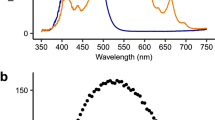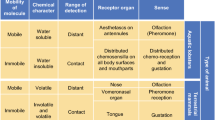Abstract
Artificial light at night (ALAN) constitutes a growing threat to coastal ecosystems by altering natural light cycles, which could impair organisms’ biological rhythms, with resulting physiological and ecological consequences. Coastal ecosystems are strongly exposed to ALAN, but its effects on coastal organisms are poorly studied. Besides ALAN’s intensity, ALAN’s quality exposure may change the impacts on organisms. This study aims to characterize the effects of different ALAN’s spectral compositions (monochromatic wavelength lights in red (peak at 626 nm), green (peak at 515 nm), blue (peak at 467 nm), and white (410–680 nm) light) at low and realistic intensity (1 lx) on the oyster Crassostrea gigas daily rhythm. Results reveal that all ALAN’s treatments affect the oysters’ daily valve activity rhythm in different manners and the overall expression of the 13 studied genes. Eight of these genes are involved in the oyster’s circadian clock, 2 are clock-associated genes, and 3 are light perception genes. The blue light has the most important effects on oysters’ valve behavior and clock and clock-associated gene expression. Interestingly, red and green lights also show significant impacts on the daily rhythm, while the lowest impacts are shown with the green light. Finally, ALAN white light shows the same impact as the blue one in terms of loss of rhythmic oysters’ percentage, but the chronobiological parameters of the remaining rhythmic oysters are less disrupted than when exposed to each of the monochromatic light’s treatments alone. We conclude that ALAN’s spectral composition does influence its effect on oysters’ daily rhythm, which could give clues to limit physiological and ecological impacts on coastal environments.





Similar content being viewed by others
Data availability
Data that support the findings of this study are available upon reasonable request.
References
Alaasam VJ, Kernbach ME, Miller CR, Ferguson SM (2021) The diversity of photosensitivity and its implications for light pollution. Integr Comp Biol 61(3):1170–1181. https://doi.org/10.1093/icb/icab156
Audino JA, Serb JM, Marian J (2020) Hard to get, easy to lose: Evolution of mantle photoreceptor organs in bivalves (Bivalvia, Pteriomorphia). Evolution 74(9):2105–2120. https://doi.org/10.1111/evo.14050
Botté A, Payton L, Tran D (2023) Artificial light at night at environmental intensities disrupts daily rhythm of the oyster Crassostrea gigas. Mar Pollut Bull 191:114850. https://doi.org/10.1016/j.marpolbul.2023.114850
Brayley O, How DM, Wakefield DA (2022) Biological Effects of Light Pollution on Terrestrial and Marine Organisms. Int J Sustain Light 24(1):13–38. https://doi.org/10.26607/ijsl.v24i1.121
Bruning A, Holker F, Franke S, Kleiner W, Kloas W (2016) Impact of different colours of artificial light at night on melatonin rhythm and gene expression of gonadotropins in European perch. Sci Total Environ 543(Pt A):214–222. https://doi.org/10.1016/j.scitotenv.2015.11.023
Bruning A, Holker F, Franke S, Kleiner W, Kloas W (2018) Influence of light intensity and spectral composition of artificial light at night on melatonin rhythm and mRNA expression of gonadotropins in roach Rutilus rutilus. Fish Physiol Biochem 44(1):1–12. https://doi.org/10.1007/s10695-017-0408-6
Christoforou E, Dominoni D, Lindström J, Diamantopoulou C, Czyzewski J, Mirzai N, Spatharis S (2023) The effects of artificial light at night (ALAN) on the gaping activity and feeding of mussels. Mar Pollut Bull 192:115105. https://doi.org/10.1016/j.marplbul.2023.115105
Cronin TW, Johnsen S (2016) Extraocular, non-visual, and simple photoreceptors: an introduction to the symposium. Integr Comp Biol 56(5):758–763. https://doi.org/10.1093/icb/icw106
Davies TW, Duffy JP, Bennie J, Gaston KJ (2014) The nature, extent, and ecological implications of marine light pollution. Front Ecol Environ 12(6):347–355. https://doi.org/10.1890/130281
Enríquez-Díaz M, Pouvreau S, Chávez-Villalba J, Le Pennec M (2008) Gametogenesis, reproductive investment, and spawning behavior of the Pacific giant oyster Crassostrea gigas: evidence of an environment-dependent strategy. Aquac Int 17(5):491–506. https://doi.org/10.1007/s10499-008-9219-1
Falchi F, Cinzano P, Duriscoe D, Kyba CC, Elvidge CD, Baugh K, Portnov BA, Rybnikova NA, Furgoni R (2016) The new world atlas of artificial night sky brightness. Sci Adv 2(6):e1600377. https://doi.org/10.1126/sciadv.1600377
Falcon J, Torriglia A, Attia D, Vienot F, Gronfier C, Behar-Cohen F, Martinsons C, Hicks D (2020) Exposure to artificial light at night and the consequences for flora, fauna, and ecosystems. Front Neurosci 14:602796. https://doi.org/10.3389/fnins.2020.602796
Gaston KJ (2018) Lighting up the nighttime. Science 362(6416):744–746. https://doi.org/10.1126/science.aau8226
Gaston KJ, Davies TW, Nedelec SL, Holt LA (2017) Impacts of artificial light at night on biological timings. Annu Rev Ecol Evol Syst 48(1):49–68. https://doi.org/10.1146/annurev-ecolsys-110316-022745
Glé C, Del Amo Y, Sautour B, Laborde P, Chardy P (2008) Variability of nutrients and phytoplankton primary production in a shallow macrotidal coastal ecosystem (Arcachon Bay, France). Estuar Coast Shelf Sci 76(3):642–656. https://doi.org/10.1016/j.ecss.2007.07.043
Hafker NS, Tessmar-Raible K (2020) Rhythms of behavior: are the times changin’? Curr Opin Neurobiol 60:55–66. https://doi.org/10.1016/j.conb.2019.10.005
Hänel A, Posch T, Ribas SJ, Aubé M, Duriscoe D, Jechow A, Kollath Z, Lolkema DE, Moore C, Schmidt N, Spoelstra H, Wuchterl G, Kyba CCM (2018) Measuring night sky brightness: methods and challenges. J Quant Spectrosc Radiat Transf 205:278–290. https://doi.org/10.1016/j.jqsrt.2017.09.008
Hussein AAA, Bloem E, Fodor I, Baz ES, Tadros MM, Soliman MFM, El-Shenawy NS, Koene JM (2021) Slowly seeing the light: an integrative review on ecological light pollution as a potential threat for mollusks. Environ Sci Pollut Res Int 28(5):5036–5048. https://doi.org/10.1007/s11356-020-11824-7
Kaniewska P, Alon S, Karako-Lampert S, Hoegh-Guldberg O, Levy O (2015) Signaling cascades and the importance of moonlight in coral broadcast mass spawning. Elife 4:e09991. https://doi.org/10.7554/eLife.09991
Kyba CCM (2018) Is light pollution getting better or worse? Nat Astron 2(4):267–269. https://doi.org/10.1038/s41550-018-0402-7
Kyba CCM, Kuester T, Sanchez de Miguel A, Baugh K, Jechow A, Holker F, Bennie J, Elvidge CD, Gaston KJ, Guanter L (2017) Artificially lit surface of Earth at night increasing in radiance and extent. Sci Adv 3(11):e1701528. https://doi.org/10.1126/sciadv.1701528
Leach WB, Reitzel AM (2020) Decoupling behavioral and transcriptional responses to color in an eyeless cnidarian. BMC Genom 21(1):361. https://doi.org/10.1186/s12864-020-6766-y
Li D, Huang J, Zhou Q, Gu L, Sun Y, Zhang L, Yang Z (2022) Artificial light pollution with different wavelengths at night interferes with development, reproduction, and antipredator defenses of Daphnia magna. Environ Sci Technol 56(3):1702–1712. https://doi.org/10.1021/acs.est.1c06286
Lin C, Todo T (2005) The cryptochromes. Genome Biol 6(5):220. https://doi.org/10.1186/gb-2005-6-5-220
Livak KJ, Schmittgen TD (2001) Analysis of relative gene expression data using real-time quantitative PCR and the 2(-Delta Delta C(T)) Method. Methods 25(4):402–408. https://doi.org/10.1006/meth.2001.1262
Longcore T, Rich C (2016) Artificial night lighting and protected lands: ecological effects and management approaches. Natural Resource Report NPS/NRSS/NSNS/NRR—2016/1213. National Park Service, F.C., Colorado
Marangoni LFB, Davies T, Smyth T, Rodriguez A, Hamann M, Duarte C, Pendoley K, Berge J, Maggi E, Levy O (2022) Impacts of artificial light at night in marine ecosystems-A review. Glob Chang Biol. https://doi.org/10.1111/gcb.16264
Mat AM, Massabuau JC, Ciret P, Tran D (2012) Evidence for a plastic dual circadian rhythm in the oyster Crassostrea gigas. Chronobiol Int 29(7):857–867. https://doi.org/10.3109/07420528.2012.699126
Mat AM, Perrigault M, Massabuau JC, Tran D (2016) Role and expression of cry1 in the adductor muscle of the oyster Crassostrea gigas during daily and tidal valve activity rhythms. Chronobiol Int 33(8):949–963. https://doi.org/10.1080/07420528.2016.1181645
Payton L, Tran D (2019) Moonlight cycles synchronize oyster behaviour. Biol Lett 15(1):20180299. https://doi.org/10.1098/rsbl.2018.0299
Payton L, Sow M, Massabuau JC, Ciret P, Tran D (2017a) How annual course of photoperiod shapes seasonal behavior of diploid and triploid oysters. Crassostrea Gigas Plos One 12(10):e0185918. https://doi.org/10.1371/journal.pone.0185918
Payton L, Perrigault M, Hoede C, Massabuau JC, Sow M, Huvet A, Boullot F, Fabioux C, Hegaret H, Tran D (2017b) Remodeling of the cycling transcriptome of the oyster Crassostrea gigas by the harmful algae Alexandrium minutum. Sci Rep 7(1):3480. https://doi.org/10.1038/s41598-017-03797-4
Perrigault M, Tran D (2017) Identification of the molecular clockwork of the oyster Crassostrea gigas. PLoS ONE 12(1):e0169790. https://doi.org/10.1371/journal.pone.0169790
Poehn B, Krishnan S, Zurl M, Coric A, Rokvic D, Hafker NS, Jaenicke E, Arboleda E, Orel L, Raible F, Wolf E, Tessmar-Raible K (2022) A Cryptochrome adopts distinct moon- and sunlight states and functions as sun- versus moonlight interpreter in monthly oscillator entrainment. Nat Commun 13(1):5220. https://doi.org/10.1038/s41467-022-32562-z
Rich C, Longcore T, Rich C, Longcore T (2006) Ecological consequences of artificial night lighting. Island Press
Rivas ML, Santidrián Tomillo P, Diéguez Uribeondo J, Marco A (2015) Leatherback hatchling sea-finding in response to artificial lighting: Interaction between wavelength and moonlight. J Exp l Mar Biol Ecol 463:143–149. https://doi.org/10.1016/j.jembe.2014.12.001
Ruesink JL, Lenihan HS, Trimble AC, Heiman KW, Micheli F, Byers JE, Kay MC (2005) Introduction of non-native oysters: ecosystem effects and restoration implications. Annu Rev Ecol Evol Syst 36(1):643–689. https://doi.org/10.1146/annurev.ecolsys.36.102003.152638
Sanders D, Frago E, Kehoe R, Patterson C, Gaston KJ (2021) A meta-analysis of biological impacts of artificial light at night. Nat Ecol Evol 5(1):74–81. https://doi.org/10.1038/s41559-020-01322-x
Senthilan PR, Grebler R, Reinhard N, Rieger D, Helfrich-Forster C (2019) Role of rhodopsins as circadian photoreceptors in the Drosophila melanogaster. Biology (Basel) 8:1. https://doi.org/10.3390/biology8010006
Smyth TJ, Wright AE, McKee D, Tidau S, Tamir R, Dubinsky Z, Iluz D, Davies TW (2021) A global atlas of artificial light at night under the sea. Elem Sci Anthropocene 9:1. https://doi.org/10.1525/elementa.2021.00049
Tan DX, Hardeland R, Manchester LC, Paredes SD, Korkmaz A, Sainz RM, Mayo JC, Fuentes-Broto L, Reiter RJ (2010) The changing biological roles of melatonin during evolution: from an antioxidant to signals of darkness, sexual selection and fitness. Biol Rev Camb Philos Soc 85(3):607–623. https://doi.org/10.1111/j.1469-185X.2009.00118.x
Tran D, Perrigault M, Ciret P, Payton L (2020) Bivalve mollusc circadian clock genes can run at tidal frequency. Proc Biol Sci 287(1918):20192440. https://doi.org/10.1098/rspb.2019.2440
Tran D, Andrade H, Camus L, Leopold P, Ballantine C, Berge J, Durier G, Sow M, Ciret P (2023) Evidence of separate influence of moon and sun on light synchronization of mussel’s daily rhythm during the polar night. iScience 26(3):106168. https://doi.org/10.1016/j.isci.2023.106168
Wu C, Jiang Q, Wei L, Cai Z, Chen J, Yu W, He C, Wang J, Guo W, Wang X (2018) A rhodopsin-like gene may be associated with the light-sensitivity of adult Pacific oyster Crassostrea gigas. Front Physiol 9:221. https://doi.org/10.3389/fphys.2018.00221
Zurl M, Poehn B, Rieger D, Krishnan S, Rokvic D, Veedin Rajan VB, Gerrard E, Schlichting M, Orel L, Coric A, Lucas RJ, Wolf E, Helfrich-Forster C, Raible F, Tessmar-Raible K (2022) Two light sensors decode moonlight versus sunlight to adjust a plastic circadian/circalunidian clock to moon phase. Proc Natl Acad Sci USA 119(22):e2115725119. https://doi.org/10.1073/pnas.2115725119
Acknowledgements
We kindly thank Pierre Ciret, Thierry Garnier, Christian Portier, and Christelle Teillet for their help during the setup of the experiments.
Funding
This work was supported by the financial support of the French Nation Research Agency (ANR), LUCIOLE project (ANR-22-CE34-0010–01) and a Bordeaux University PhD scholarship for A. Botté.
Author information
Authors and Affiliations
Contributions
Study conception, design and methodology, D.T., A.B., L.P.; experimentation, A.B., D.T.; molecular analysis, A.B., L.P.; data treatment, A.B.; interpretation, A.B., D.T., L.P.; manuscript writing, A.B.; review and editing, all authors; funding, D.T. All authors contributed critically to the drafts and gave final approval for publication.
Corresponding author
Ethics declarations
Ethics approval
There are no human subjects in this article. All experiments complied with the laws in effect in France and they conformed to international ethical standards.
Consent to participate
There are no human subjects in this article and consent to participate is not applicable.
Consent for publication
Consent to publish is not applicable.
Conflict of interests
The authors declare no competing interests.
Additional information
Responsible Editor: Philippe Garrigues
Publisher's Note
Springer Nature remains neutral with regard to jurisdictional claims in published maps and institutional affiliations.
Supplementary Information
Below is the link to the electronic supplementary material.
Rights and permissions
Springer Nature or its licensor (e.g. a society or other partner) holds exclusive rights to this article under a publishing agreement with the author(s) or other rightsholder(s); author self-archiving of the accepted manuscript version of this article is solely governed by the terms of such publishing agreement and applicable law.
About this article
Cite this article
Botte, A., Payton, L. & Tran, D. The effects of artificial light at night on behavioral rhythm and related gene expression are wavelength dependent in the oyster Crassostrea gigas. Environ Sci Pollut Res 30, 120375–120386 (2023). https://doi.org/10.1007/s11356-023-30793-1
Received:
Accepted:
Published:
Issue Date:
DOI: https://doi.org/10.1007/s11356-023-30793-1




